

| The pupa which gave rise to wasps |

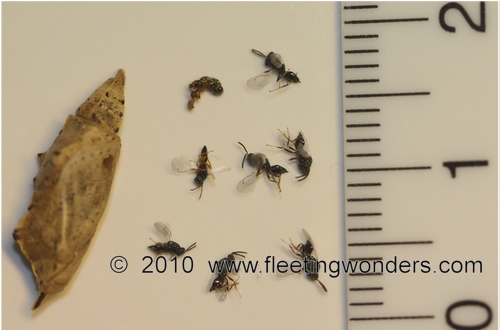 |
Found in the garden during the Autumn (October 2009), this pupa of Pieris sp. was kept in a special cage for insects in order to see what would happen. The pupa spent the winter period outside then it was checked regularly expecting to witness the emergence of the butterfly... time went by until May 2010, when unfortunately a small hole was seen one day and some small wasps could be spotted inside the pupa. Amazingly, those small insects seemed to be staying inside their harbor instead of directly getting out of it. The pupa was put into a transparent box so that the remaining wasps would not escape.... | |
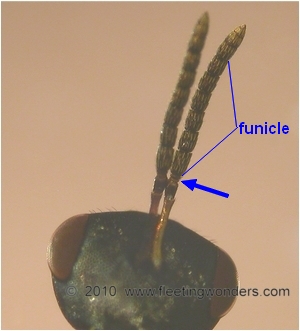 |
||
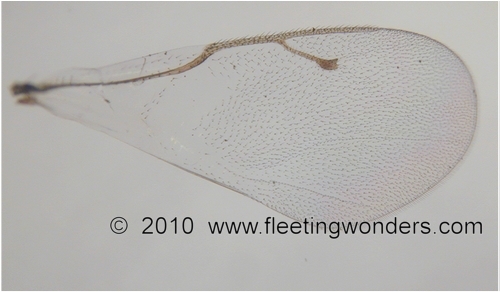 |
||
| The close examination of these small insects lead to the identification of some Chalcid wasps (superfamily Chalcidoidea). Their wings are poorly veined unlike all other hymenopterans. The antennae show an 'elbow' well visible on the two pictures below ; the antenna funicle has got less than 8 segments and there are two disk-like anelli at its base, like rings (blue arrow). The extremity of the antenna (the club) is composed in this case of 3 segments that are stuck together and form a slight bulge. | ||
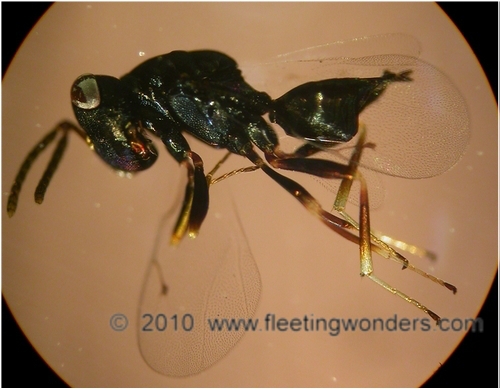 |
Thanks to Dr Mark Shaw, from the National Museums of Scotland, this species could be identified : Pteromalus puparum (family Pteromalidae). Seven living wasps finally got out of the chrysalis and could be observed through the box. Six of them were similar to the specimen here on the left, with a black colour whereas the seventh specimen (below on the left) had a metallic green colour. It appears to be a male because it was vigorously chasing the others in the box, attempting to mate... Interesting enough is the fact that these chalcidoids emerged within the host nymph, which differs from the other life-cycle of chalcid wasp shown here . |
|
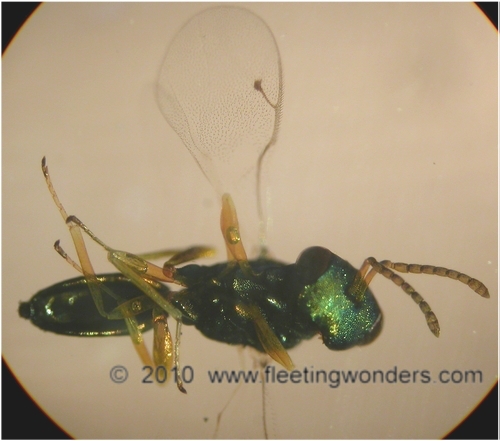 |
||